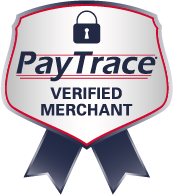Over 70% of your potential new customers will visit your website before ever calling you or coming in to your location. It’s obvious then, that it makes it even more important to have an effective website design that conveys credibility.
The question is, when is the last time you really looked at your website as a potential customer would? How much do you even think about your website’s design? Are you keeping track of its performance? Have you even looked at it lately?
Your Website is Your Main Connection with Your Clients
Despite rumors to the contrary, your website is still your company’s most important marketing tool. Think about it—where are you directing people that you connect with on social media, in your articles, through your business cards, emails and webinars?
Needless to say, your website is the life blood of your online business, and it can’t take care of itself. Great website design for your Denver company depends on paying attention to the elements that make all sites function well.
So, let’s get back to basics with these 3 essential tips:
1. Create content that people will love.
For some Denver businesses, this is the great challenge when it comes to website design. But, trust us, it’s worth the time and expense. Compelling content will hook visitors, draw them in and keep them there. And, this is what you need in order to make sales.
Great content starts with a strategy. What do you want your content to accomplish? Ask yourself these questions:
· Who are my existing and potential buyers?
· What are their needs?
· What do I want them to do once they are on my site?
Once you have thought out the answers to these questions, you’ll be able to create content that speaks to your audience and incorporate this content into your site in a way that makes sense to them.
2. Align the design with your goals.
While you don’t need to be a da Vinci, the graphic design portion of any site is critical. But, a pretty site by itself won’t cut it. One of the most important things to remember about your design and layout is that it should correspond to your content and your goals.
Remember the three questions above. Does your design answer them the way your content does? What does your ideal buyer want to see when they come to your site? What will compel them to act? Visual cues are powerful subconscious motivators, so develop a graphic design and layout scheme for each page that not only grabs attention but leads visitors effortlessly to the information they need.
What happens when you do this successfully? They stay on your site longer, they click on your calls to action, and they make purchases!
3. Make navigation intuitive.
Great content and effective visual design are foundational to great website design. Good site navigation completes the picture. Plan out in advance how you want users to go from A to B to C and design your site accordingly.
You don’t want to get people to your site only to lose the sale because they get hopelessly lost within its depths. Lead them where you want them to go, using strategically placed internal links, “bread crumb” navigation techniques and a clear site map. Place calls to action on every page where appropriate. Tell them what to do!
Every page is Important
Remember, every page can be a landing page, a place where you can give visitors direction. Maximize each page for usability, lead them down the path, and make it easy for them to act. Eliminate visual distractions with clean, uncluttered page layout and design. Use fewer, but more impactful, images.
So, now that you’ve had a chance to examine your site, how does it measure up? Does it contain all of these elements? If not, get help! A Denver website design company can turn your online storefront into the place buyers want to be.
Do you have any great website design tips that are working for you? Our readers would love to hear about them!








